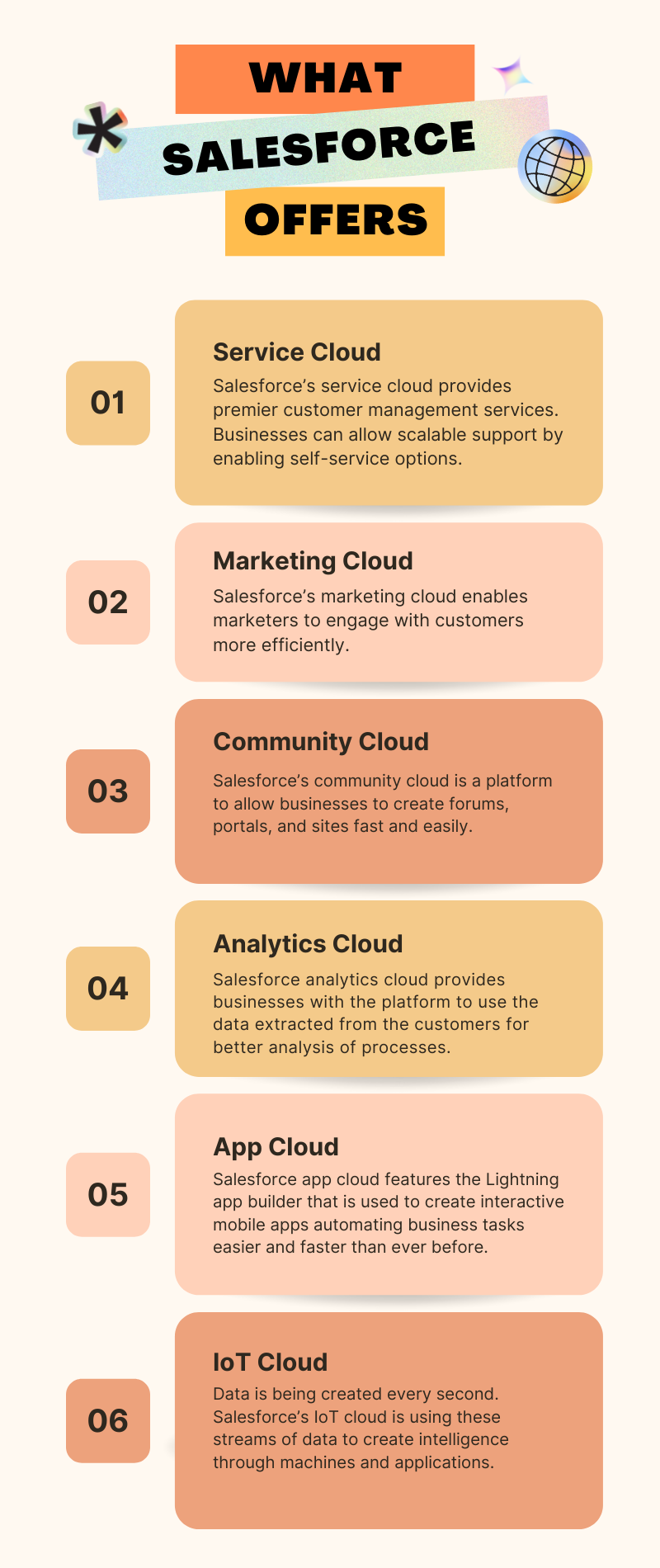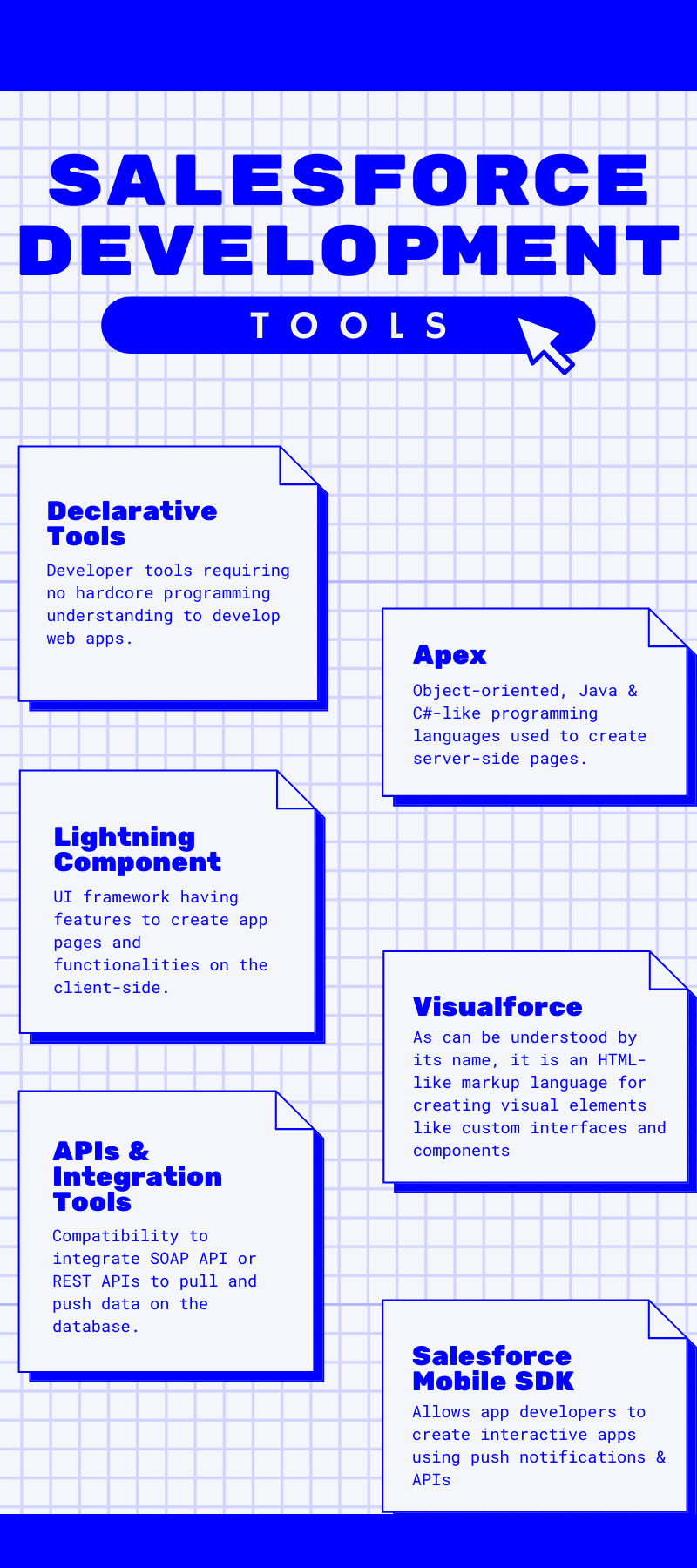Salesforce has often been identified as a complete business solutions package meeting the demands of startups, SMBs, and large-scale enterprises. But, is that enough to know about the world’s first SaaS product?
In recent years, the platform emerged as an efficient alternative technology to create and manage mobile app development processes.
PwC witnessed a 300% increase in its sales pipeline in 2017 after adopting Salesforce.
There has been a staggering rise in Salesforce’s revenues and userbase over the years.
With vast and evolving offerings of Salesforce development tools, it has proven to be a credible choice for creating robust, sustainable, and secure mobile applications. It is providing the global market with some astounding Software resources to manage their businesses.
In this blog post, we shall tell you everything you must know before availing of Salesforce development services.
What Does Salesforce Do?
Salesforce is a complete package of cloud-based services for organizations seeking next-generation customer relationship management, marketing automation, application development, and analytics. The customer success platform is a new trend in the software industry.
The platform is enabling its users including professionals, businesses, or a CRM & ERP development company to manage their customers and partners and develop cloud-based applications faster. It provides developers with the facility to choose the right application architecture for them.
Salesforce indulges in a high-scalability so the applications developed on the platforms can adopt new features and apps interactively over time. Since Salesforce provides a centralized, user-friendly, and automated panel to create and manage application pages, it takes less time building and deploying the applications.
What Types of Services Does Salesforce Offer?

As mentioned earlier, Salesforce is a 360-degree package of customer and business services. It allows businesses to fulfill all of their digital needs in one place. Also, it is credible and secure so no business would worry about its liabilities.
From developing applications to managing large-scale processes, Salesforce has been a popular choice in the modern-age business environment.
There are five main service components of Salesforce, the customer success platform.
Service Cloud
Salesforce’s service cloud provides premier customer management services. Businesses can allow scalable support by enabling self-service options. With such an approach, the business agents can focus on resolving more complex issues that require a human understanding of the problems. However, most of the service tasks are dealt with through automation by predicting the next-best actions.
Service cloud offers features to adopt changes quickly i.e. by using drag-and-drop functionality. Customers can use business bots with integration availability on various platforms and information on almost every possible condition on the product or service-related issues.
Marketing Cloud
Salesforce’s marketing cloud enables marketers to engage with customers more efficiently. They can know their customers’ interests so businesses can show them relevant products through different portals. Using the data-efficient insights of the marketing cloud, businesses can achieve maximum customer engagement to their products and services.
It provides businesses with a range of options to reach out to customers interactively and show them the content they might like. Marketers can plan or schedule their campaigns periodically and extract the information insights on every stage using the platform. Thousands of third-party applications can be integrated into using the marketing cloud and make your activities more efficient and interactive.
Community Cloud
Salesforce’s community cloud is a platform to allow businesses to create forums, portals, and sites fast and easily. It starts by choosing customizable templates developed using a library of page layout and elements such as customer account portal, customer service, partner central, insurance agent, etc. Moreover, developers can create their own interface using the ‘Build Your Own’ system.
Users can choose relatable themes to make instant changes in style, color, and fonts. They can add CRM-supported components to the pages for respective industry needs.
Analytics Cloud
Salesforce analytics cloud provides businesses with the platform to use the data extracted from the customers for better analysis of processes. It provides the resources to store unlimited amounts of data. The platform creates actionable insights for the professionals of different processes within the organization.
There are extensive sets and modules of data that create a hugely impactful source of business analytics. It provides businesses with efficient and multilateral control over the processes and activities running back and front from one place. It provides analytics apps for different industries’ operations runnable on different device types.
App Cloud
Salesforce app cloud features the Lightning app builder that is used to create interactive mobile apps automating business tasks easier and faster than ever before. It comprises several crucial features to include actions and events in your apps. It has reduced the process gaps between IT and business by simplifying this comprehensive and flexible.
In general, the app cloud has helped business people to play a crucial part in the development of apps along with technologists.
IoT Cloud
Data is being created every second. Salesforce’s IoT cloud is using these streams of data to create intelligence through machines and applications. It creates meaningful and useful data insights which users can utilize in real-time applications.
It is the structural background of the process through which you are notified of traffic delays, high-temperature alarms, pick-up details, etc.
Tools & Technologies for Building Your App on Salesforce

Developers can use Salesforce for any type of apps using customizable templates and design. There are several ways through which Salesforce can be used as an alternative for standard native app development services to develop scalable and robust mobile apps.
Declarative Tools
Salesforce provides point-and-click tools for the customization and configuration of mobile apps. These apps indulge in speed, efficiency, and flexible information storage. Developers can create objects and store relevant data faster. The retrieval and deletion of data from these objects can be performed with ease and speed.
Apex
Apex is Salesforce’s cloud-based and object-oriented programming language. Its syntax is similar to that of Java and C#. It indulges in the easy creation of user actions and objects. It utilizes flow and transaction statements to include and interact with third-party APIs. An evident property of Apex is that it performs events and actions as they run through a set of database instructions.
Lightning Component
The Lightning component is used as a JavaScript UI framework for developing mobile and desktop applications. It provides customizable components to create a range of reusable elements in the application. It eases the job of rendering UIs and manages application events on the client side.
Visualforce
As can be understood by its name, it is an HTML-like markup language for creating visual elements like custom user interfaces and components. It supports the inclusion of third-party libraries of jQuery and AngularJS. Developers use tags while creating UIs through Visualforce to create different components on the interfaces. The developers can use their custom logic or inbuilt Salesforce logic scripted in Apex.
APIs & Integration Tools
Salesforce provides tools and APIs to set up a flexible and chained integration between the platform and third-party resources. Developers use SOAP API or REST APIs to pull and push data on the database and analyze the entities in a Java app.
The platform utilizes plenty of integration tools to power the capabilities of its users. Some of the most crucial integration tools on Salesforce include outbound messaging, apex callouts, platform events, Salesforce Connect, Heroku Connect, and Canvas.
Chatter
Chatter is like a troubleshooting social collaboration tool. It has user profiles, feeds, and groups that are used as resources to extract data for resolving issues in data sharing or other development-related process tasks.
It provides information to its users securely on any device. It keeps a sustainable and sophisticated record of accounts, contacts and, cases.
Salesforce Mobile SDK
Salesforce Mobile SDK is used to create custom mobile apps using the data-efficient tools of Salesforce. It is considered an alternative approach to build any specific type of application using the platform. It is considered a relatively secure, credible, and extensively supporting tool to create robust applications.
Salesforce Mobile SDK enables the developers to create engaging UX designs with push notifications. Developers use REST APIs to utilize Salesforce data to create robust and responsive applications.
How to Develop an Application Using Salesforce
Mobile apps have been a crucial asset to the business these days. Salesforce has emerged as a leading platform to create sustainable app solutions for businesses. Developing an application through Salesforce is not much different from the standard mobile app development process.
Let’s have a look at the step a Salesforce development company follows to create an application using the platform.
Understanding User Needs
Salesforce is most often used by businesses to develop applications for their internal usage. Thus, becomes necessary for developers to interact with the stakeholders of the process to understand their needs in general and more specifically. Such an approach would help the developers to create a highly personalized application using the platform.
They can categorize the requirements into three parts; System, Business, and Functional. Thereafter, the Salesforce developer can give their technological consideration to the requirements and carve the plan of development, and accomplishing the requirements.
UI/UX Design
Salesforce developers can create user-friendly, interactive, and light-weighted application pages using the Lightning Component or Visualforce. Salesforce enables highly flexible and customizable design tools.
The platform indulges in design tokens that help UI/UX developers to add the right spacing, appealing density colors, fonts, and custom icons adding custom to layouts and modules. The platform utilizes user stories to create better design and UI prototypes of the application for different use cases including eCommerce development services.
Third-Party Tools Integration
Before making the application out for customer usage, the developers can include or integrate additional third-party tools and functionalities. This should be noticed that such integration would not really impact the development structure of the application.
Salesforce is a flexible platform and the developers would make their applications to be compatible with the integration of third-party tools after development.
Development
There are plenty of functionalities in Salesforce to enable the simplified development of applications. With Salesforce, it is simple to define the application’s architecture and comprehend the needs of the customers.
The development approach through Salesforce tools and technologies is incremental which means it goes phase-by-phase. It is the reason why it is easy to adopt unstable requirements within the applications being developed using the Salesforce platform.
Quality Assurance Testing
After developing the application, QA testing professionals perform several tests on the Salesforce applications. It makes app delivery more precise, user-friendly, and efficient to deal with complex situations. While testing, the developers make sure that the applications are sustainable and of premier quality.
The main objective of quality assurance remains standard even in Salesforce applications. There can be various types of tests to introspect the efficiency and quality of the application.
Launch
Once the application passes the user acceptance test after development, it is considered good to launch. The Salesforce application can be distributed through different platforms used to launch other classic and standard applications.
Maintenance
After being handed over to the client, the application developers may need to look after the real-time functioning and challenges faced by the users. It escapes any discrepancies that may occur after delivering the product to the customers. It also eliminates the risks of severe impacts on the application.
For a comparative study, you can read a standard mobile app development guide.
How Much Does It Cost to Use Salesforce for App Development?
The cost to develop an application depends upon several factors. Some of the factors are as the followings;
- Size and scope of the project
- Design complexities
- Developer experience
Along with these two factors, the cost to avail mobile app development services using Salesforce adds two main components to its cost estimate including the SFDC edition and the application cost.
You can get the pricing details for the Salesforce edition here.
Reports & Statistics
- PwC witnessed a 300% increase in its sales pipeline in 2017 after adopting Salesforce. (Salesforce)
- Salesforce stands third as the most popular in India in the CRM category. (BuiltWith)
- Annual earnings per share of Salesforce.com are estimated to reach 1.91 U.S. dollars in 2021. (Statista)
Conclusion
Salesforce remains a new and popular choice in the CRM software industry. Just within a few years, the platform has given close competition to some more experienced and bigger competitors in the global market. You can consult a Salesforce professional services provider to get your application onboard using the wonders of Salesforce.



